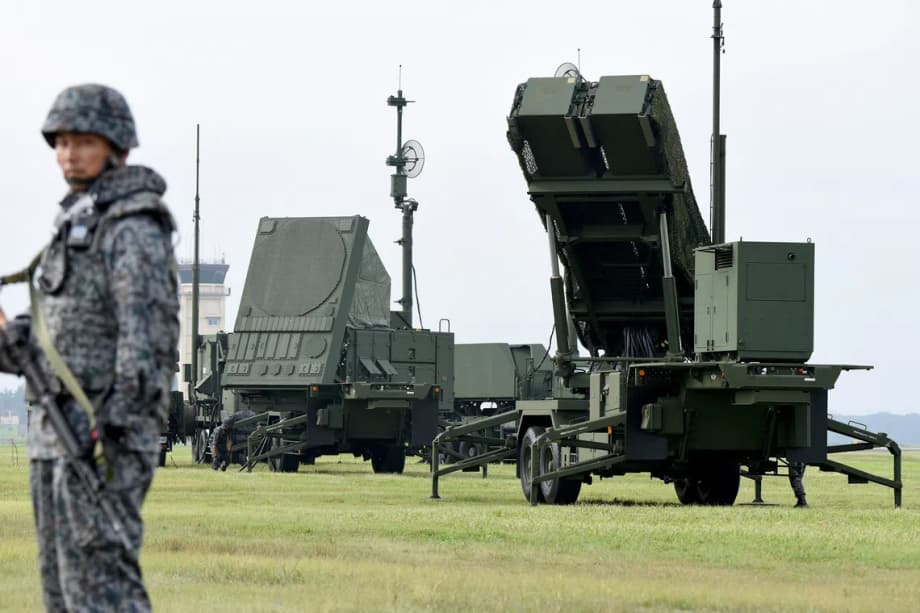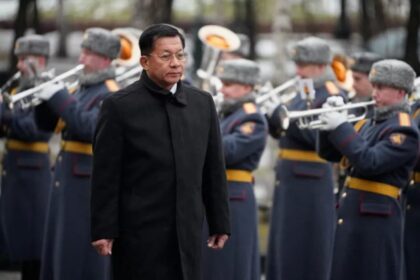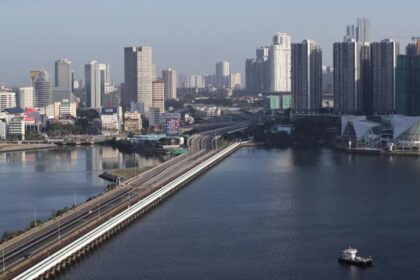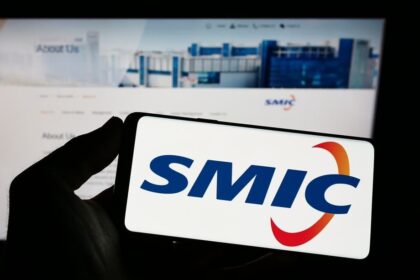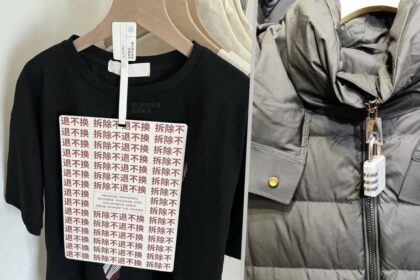A new phase in Japan US defense ties
Japan has exported domestically produced Patriot surface to air missile interceptors to the United States for the first time, a milestone under Tokyo’s eased rules on arms transfers. The shipment, drawn from the Air Self Defense Force inventory, was made at Washington’s request to replenish US stocks while the United States continues to support Ukraine against Russia’s invasion. Officials did not disclose the quantity or timing of the transfer.
The missiles are Patriot Advanced Capability 3 interceptors, manufactured in Japan by Mitsubishi Heavy Industries under license from US firms Lockheed Martin and RTX. They form a core layer of Japan’s ballistic missile defense and are designed to defeat ballistic and cruise missiles. Until 2023, Japanese rules allowed only the export of parts for licensed equipment. Updated guidelines now permit shipment of finished items to the country that issued the original manufacturing license, with strict conditions on end use and re export.
Tokyo has stated that the interceptors transferred to the United States are for use by the US military and will not be provided to a third country. That commitment maintains Japan’s prohibition on sending arms to countries at war while still supporting the alliance through indirect replenishment.
The decision comes amid rising global demand for Patriot missiles. Ukraine has relied on Patriot batteries to defend cities and critical infrastructure against Russian missiles and drones. Operators in Europe and the Middle East also draw on the same supply base. Higher usage rates and urgent requests have tightened inventories and put stress on production lines.
How the export became possible
Japan’s arms transfer posture has evolved in stages. In 2014, the government replaced a near total ban with the Three Principles on Transfer of Defense Equipment and Technology. Those principles allowed limited exports but continued to block most finished weapons and any transfer into active conflict zones. In late 2023, Japan’s National Security Council approved a targeted change that now permits exports of completed items made in Japan under foreign license, so long as they go back to the country that issued the license and are not re exported without Japanese approval.
After that decision, leaders in Tokyo framed the step as both a legal clarification and a strategic signal to the United States.
Chief Cabinet Secretary Yoshimasa Hayashi underscored the alliance dimension when he described the policy shift in a briefing.
“This decision has a significant meaning to strengthen the Japan US alliance, and it will contribute to Japan and the Indo Pacific region’s peace and stability.”
That rationale helps explain why the first shipment is PAC 3 interceptors bound for US forces. It strengthens alliance readiness, supports a critical air defense mission in both the Indo Pacific and Europe, and stays within the boundaries of Japan’s legal framework.
What Patriot PAC 3 interceptors do
Patriot is a ground based air and missile defense system that combines a high power radar, command and control, and mobile launchers. Units detect and track incoming threats, assign interceptors, and attempt to destroy targets in flight. The system protects military units, air bases, industrial sites, and cities from aircraft, cruise missiles, ballistic missiles, and some types of drones.
PAC 3 is the interceptor used for the most stressing targets, including ballistic missiles in the terminal phase. Unlike earlier Patriot missiles that carried blast fragmentation warheads, PAC 3 uses hit to kill technology. The missile releases no explosive charge at the target. Instead, it steers with high precision into the incoming warhead and destroys it with kinetic energy. That approach reduces fragmentation and increases the chance of disabling a ballistic missile’s warhead before impact.
Japan fields Patriot alongside ship based Aegis air and missile defense, early warning satellites operated by partners, ground based radars, and civil defense procedures. Patriot helps close the last layer in that network, especially against short and medium range ballistic missiles fired by North Korea and potential cruise missile threats. The same attributes have made Patriot a centerpiece of Ukraine’s defense against Russian missile salvos.
How a Patriot battery fights
In a typical engagement, the radar detects and tracks a threat, the control station calculates a firing solution, and launchers fire one or more interceptors. Guidance commands bring the PAC 3 close to the incoming weapon, then the interceptor’s onboard seeker takes over and guides the final maneuver at very high speed. Successful intercepts are the product of rapid sensing, fast computation, and precise control. Patriot crews train to repeat that cycle under sustained pressure, which is where replenishment of interceptors becomes crucial.
Will these missiles end up in Ukraine
The Patriot interceptors shipped from Japan are for US use. Tokyo has emphasized that the missiles will not be transferred to a third country. That condition preserves Japan’s long standing restrictions even as it plays a larger role in allied supply chains.
Chief Cabinet Secretary Minoru Kihara explained the limits publicly when confirming the delivery.
“The export is intended to replenish US military stockpiles, and the missiles in question will not be provided to third countries.”
Even with that restriction, the shipment can indirectly aid Ukraine. When US stocks are replenished, Washington has greater flexibility to send its own interceptors or systems to Kyiv while keeping sufficient reserves for US forces. Backfill is a common method among allies to balance urgent support for an active war effort with each nation’s own readiness requirements.
The decision also aligns with Japan’s preference for case by case approvals. Finished items made in Japan under foreign license can go only to the country that owns the license, and any onward transfer would require Japanese consent. That keeps legal and political control in Tokyo while answering an urgent request from the United States.
Production limits and plans to expand output
Demand for Patriot interceptors has grown faster than production. The United States has set targets to increase output of PAC 3 missiles in the coming years. Industry figures discussed for the United States include a move from roughly 500 interceptors produced annually in 2024 to about 650 by 2027, with ambitions to push global output higher as supply chains expand.
In Japan, Mitsubishi Heavy Industries produces PAC 3 interceptors under license and has been making about 30 missiles each year. Company and government planning has pointed to a potential increase to around 60 per year. A shortage of a key component, the seeker that guides the missile in the final seconds of flight, has been a bottleneck. The seeker is supplied by Boeing from facilities in the United States. Factory expansion is under way, but new lines are projected to come online around 2027. Each interceptor costs roughly 4 million dollars, which helps explain why public procurement plans and industrial timing draw close scrutiny.
Washington and Tokyo have also discussed deeper industrial cooperation. Ideas range from using Japanese factories to add capacity for interceptor components, to broader maintenance and upgrades for US ships and aircraft in Japan. Leaders highlighted this agenda at a summit in 2024 and directed working groups to map practical steps. Any larger buildout would require investment decisions, since current Japanese subsidies primarily support production intended for the Self Defense Forces rather than export under license.
Production constraints are not only a technical issue. Sourcing specialized materials, training skilled workers, and certifying lines to strict quality standards all take time. The effort nonetheless reflects a shift toward more resilient supply chains among allied nations that operate Patriot, as usage and training consume higher numbers of interceptors than in past years.
Domestic debate and regional signals
Japan’s postwar constitution renounces war and limits the nation’s military to self defense. Within that framework, Japan has steadily updated laws and guidelines to address a changing security environment. The government plans to lift defense spending to around 2 percent of gross domestic product by 2027. Investments include standoff missiles, improved air and missile defense, and a next generation fighter program with the United Kingdom and Italy.
Public opinion has moved over time in response to North Korean missile launches and concerns about stability in the Taiwan Strait. The new export rules retain strict oversight, require case by case approvals, and keep firm bans on transfers to countries in active conflict. Those guardrails are designed to reassure voters while advancing cooperation with the United States and partners.
Regional reactions have been mixed. Beijing and Moscow have opposed past steps by Japan to expand its defense role. Officials in Tokyo counter that the country remains within its legal limits and is acting to deter aggression. The Patriot export underlines that balance. The missiles remain in US hands, while the alliance gains a practical boost to readiness in the Indo Pacific and beyond.
What this means for the alliance and industry
For the United States, Japanese made interceptors help bridge a near term gap as demand rises in Europe and the Middle East, and as Ukraine expends missiles in active defense. For Japan, the transfer demonstrates that its industry can support an allied mission without breaching domestic red lines. The experience also builds a foundation for future cooperation on defense production, maintenance, and technology sharing.
Japan’s updated rules apply beyond Patriot. Officials have discussed possible transfers of other licensed items, such as 155 millimeter artillery shells produced in Japan under foreign licenses, provided the destination is the country that owns the license and all legal conditions are met. Each case will still require approval by the National Security Council, which keeps political oversight in Tokyo.
The broader message is about resilience. Allied forces need a steady flow of interceptors for training and operations. Expanding production in the United States, working with Japanese capacity where feasible, and managing supply chain chokepoints such as seekers can all help reduce the risk of shortages. The first Patriot shipment from Japan to the United States is both a practical contribution and a signal that defense industrial ties are tightening as threats evolve.
The Bottom Line
- Japan has shipped Patriot PAC 3 interceptors from Air Self Defense Force stocks to the United States for the first time.
- The transfer was enabled by 2023 rules that allow export of finished items made in Japan under foreign license back to the license holder.
- Tokyo says the missiles are for US use and will not be provided to third countries.
- The shipment supports US stockpiles as Washington continues to aid Ukraine’s air defense.
- Production remains constrained, with a shortage of Boeing made seekers delaying higher output until around 2027.
- Mitsubishi Heavy Industries makes about 30 PAC 3 interceptors a year in Japan, with plans that could increase to about 60 if components are available.
- Leaders have ordered working groups to expand US Japan defense industrial cooperation, including maintenance and potential capacity growth.
- Japan keeps tight legal controls on arms transfers, retains bans on exports to countries at war, and approves cases through its National Security Council.


